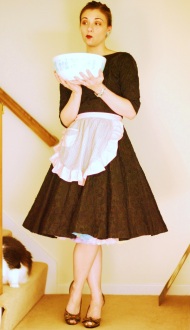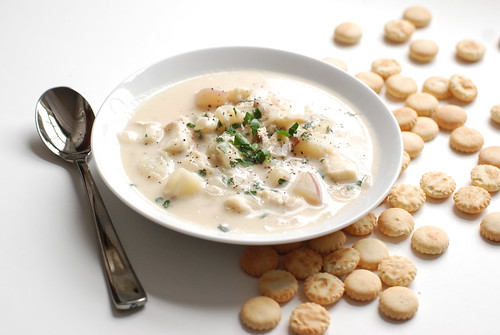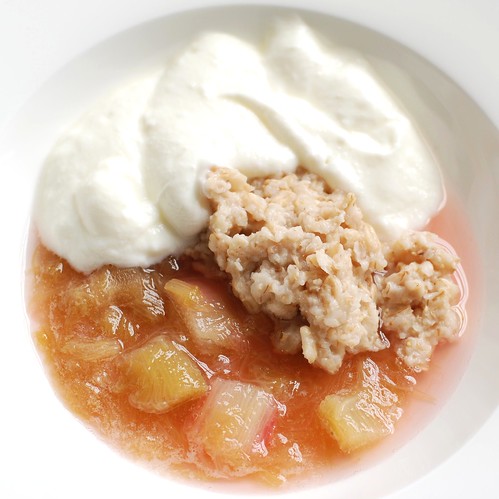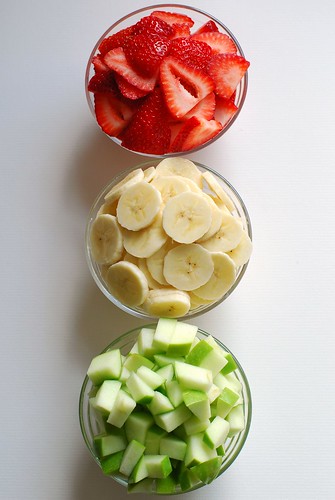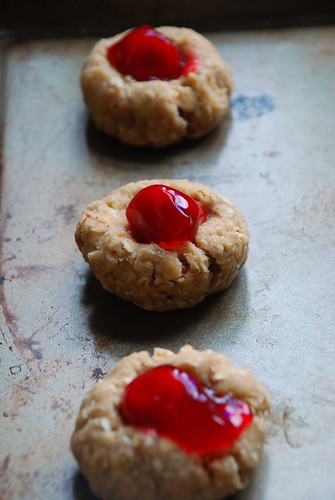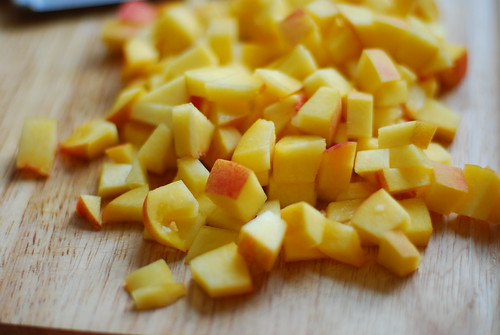I’ve seen a lot of bloggers who take affront to this comment, and I understand why. To the uninitiated, SLRs do all the heavy lifting and if you can just drop $500 on a camera body you can take all these dreamy bokeh-laden photos that are instantly beautiful. You will find this untrue if you peruse a cross-section of food blogs and take note of the equipment.
Some will claim that a point-and-shoot is all you need, but they’re the ones with the $500 lenses, and so it’s hard to take that suggestion seriously. Granted, a good eye is way more valuable than a DSLR, but I know that I wouldn’t have learned how to take the photos I do with a point-and-shoot because there simply isn’t enough control. Depth of field is a big deal in food photos because it lets you control which part of the food you want people to look at. At the same time, the inclination with new SLR owners is to overdo the bokeh (that fuzzy background you can’t get from a point-and-shoot), and what results are photos where it’s hard to tell exactly what you’re looking at.
To answer this question directly, I shoot with a Nikon D80 with a 1.4 50mm fixed lens, no zoom. But many times the real question is “how do you get shots like that?” and showing off my fancy equipment really doesn’t answer it very well. I prefer to answer it like this:
With a tripod, measured white balance, and an f-stop around 3.8. The light meter is usually two notches to the left of the middle. I rely heavily on indirect and diffused light. I use a generic and simple Windows editor to brighten the shot until the background is truly white, up the contrast a little bit to give it some pop, and crop in a square whenever possible.
Some of these things are just my style: I like clean white backgrounds, but I really admire photogs who can really set up a scene with accessories; I’m just not skilled in that category, though I do try. My photos are always a little blown out, and while I’m sure learning to use a lens with a zoom would make my life easier in terms of getting the right detail without having to move my tripod every time I want a new perspective, my fixed lens is the best quality I own.
Other elements are pivotal, though. A tripod is really really SUPER important when shooting still life of any stripe, particularly when you’re using artificial light. But even the shots I take in direct sunlight are shot with a tripod because it allows me to crop the picture fairly closely without losing sharpness.
White balance is such a simple thing that nobody seems to do, and that’s why you see all kinds of orangey, unappealing Chinese-food menu type photos on many food blogs. Or you’ve probably noticed shots that have this weird blueish tinge to them–these were taken just after sunset when the natural light is still useful, but not as warm as it is in the light of day. They do look much better than the orange pictures, but would really stand out if they only had the right colour tone. There are automatic settings for this on all cameras, and mine will even let me choose the color temperature by number, but nothing beats a white card measurement.
Observe, orange food that would otherwise look lovely: 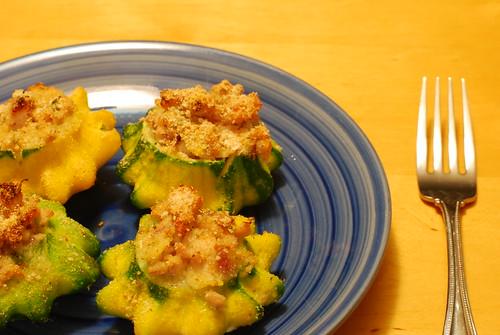
In contrast, a bluey twilight shot:
And then there’s my opinion about bokeh: it’s easy to go nuts the first time you have access to tools that can create it, but I recommend looking at each shot out of context post-edit to determine whether an uninformed observer would be able to identify the important items in the shot. If it looks like a nondescript blurry tan thing, you probably need to up the f-stop. I find my most useful shots come out around 3.8, which most standard lenses will accommodate, and will go lower when shooting something kind of ugly, like a casserole that tastes awesome, has beautiful ingredients, but looks like some kind of slurry when it comes out of the oven. Even then, though, I *may* go down to 2.4 or something, but rarely lower.
Behold, an ugly dish with a low f-stop to hide its utter lack of visual appeal:
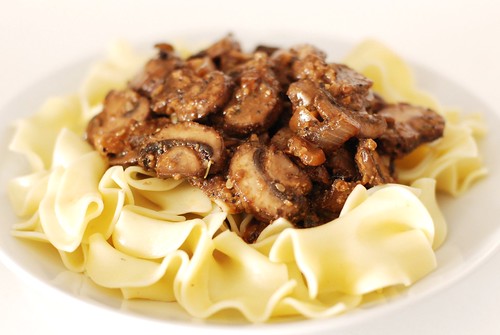
Also, I too fell victim to the siren-like song of bokeh early on. Can you tell what this is immediately, or do you have to kind of like, squint and think about it, or mouse over to see a caption?
(it’s chopped peaches)
So anyway, that’s a crash course in “how she done make all those pretty pictures.”
What revelations have made your photos 1000x better? Do you disagree with my aggressive insistence toward tripods? I’m willing to bet that there is someone who manages to take really awesome shots and has a totally different philosophy, but I also bet there’s no way he or she doesn’t measure white balance!
I’ll be adding particularly insightful comments to the end of this post because it really is meant to be more of a discussion than a declaration of beliefs. Here goes.
Nick from Macheesmo has the best advice anyone could ever offer to someone teaching themselves how to shoot:
I remember when I was learning how to use some of the manual settings on my camera… I just set an apple on a white plate and took probably 100 photos of it… changing one setting each time from the same place. It was interesting to see the different depth of fields in action… shutterspeed was a bit lost on me for awhile though due to the still-ness of my experiment (I learned shutterspeed while being frustrated trying to photograph a dog.)
Yes yes yes yes. Steal this idea. If you’ve been sitting on a nice camera for some time and still have no idea what to do with it, DO THIS. Your time will be well-rewarded. Practice makes perfect, and one of the only reasons my pictures are anything to look at is because I take no fewer than 100 shots for any one post. Over the course of 100 posts and literally 10,000 photos, you learn a lot about your toolbox.
Pumblechook makes a fine point, though I suspect his casseroles are routinely uglier than my own [insert winky face]:
I must digress on the issue of aperture. Personally, for most shots I like to keep it as low as is feasible because I’ve found it is much more forgiving in less than stellar lighting conditions. If I want certain areas to stay in focus I’ll just play around with the focus points, but thats just me. 🙂
G offers a perspective from a far more professional photographer than I am. I only wish I could get the shots she does with a point-and-shoot, but I leave the non-food photography to people with a better eye for that kind of thing.
i agree. It’s not the camera, it’s the photographer. I can get better pictures with a vintage crap box camera than i can get with an SLR. I’ve heard of many people whining that they need an SLR cos their point and shoot takes shit photos. And then “oh my SLR must be broken..the pictures aren’t goodâ€. Ummm yeah…because the camera can only do so much and really, there’s other factors that go into “good photographyâ€. So go ahead and buy that bulky camera and take crappy vacation pictures. it’s all the same to me. Ok vent over.
Still…a good point and shoot, if used properly can take the same beautiful pictures and SLR can take. I have both and i use them accordingly, depending on what i need and want to shoot.
You can see evidence of this philosophy in action on G’s gorgeous Etsy site: jiorji’s Garden Dub
Kim says:
I would love a fancy camera with manual settings and white balance settings (though maybe mine has them and I just don’t know how to use them), but honestly, I wouldn’t make good enough use of it. The food pictures on my blog aren’t amazing, but it’s not primarily a food blog, so I don’t care that much. 🙂
Kim is so right. If you just wanna take walkin’ around pictures, or don’t have a need for anything super sharp or detailed, or even if you’re taking pictures of big things like landscapes, save yourself a lot of money and buy a decent point-and-shoot. This is also the lighter option and if you lose or break it, you’re not out of commission for the months it can take to save up the money for a replacement.
Similarly, a few commenters lamented their “inferior” equipment, and yet they still had some great shots on Flickr and websites. Consider:
- PushEject (website: Wort-O-Matic)
Carlos brings up a good point, and while I shy away from defending my articles, I should point out that this wasn’t really meant to be an all-inclusive sort of thing . . . really, I was just focusing on the camera-specific details. I may address composition at another time, but there are so many food blogs out there to look to for ideas that (generally) people seem to know the difference from a good composition vs a less stellar one.
I started with a p&s too and if there was one thing I learned using a P&S, it was composition still is king of all skills. One cannot make-up for bad composition. (I think this component was overlooked in the article.)

